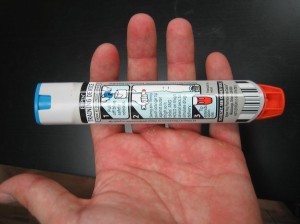Tree nuts including almonds are considered as one of the leading causes of life-threatening food reactions. If an individual is highly sensitive or allergic, he/she reacts after consumption of raw or processed almonds including almond butter. It is believed by many experts that strict avoidance of all tree nuts and peanuts must be observed due to the potential for cross-contamination.
It is important to note that almonds have been linked to allergies to certain fruits and tree pollen since they are also members of the same family.
What are the possible causes?
If an individual is sensitive or allergic to almond butter, the body overly reacts to profiling which is a protein present in almonds. The immune system releases immunoglobulin E (IgE) and histamine.
Those who have food allergies might be allergic to tree nuts. Remember that allergies often develop among children but some outgrow them by the time they reach 6 years old. Even though categorized as tree nuts, almonds are part of the Rosaceae family of fruits which include apples, pears, peaches and apricots. An individual is expected to be allergic if a close family member has an allergy but the reason is still unknown.
What are the symptoms?

The symptoms of an allergy to almond butter typically manifest right after eating the food. The signs and symptoms include the following:
- Sneezing episodes
- Wheezing
- Itchy rashes
- Runny or stuffed nose
- Watery eyes
- Abdominal cramping
- Nausea
- Vomiting
- Diarrhea
In some circumstances, an individual can end up with a serious anaphylactic reaction. Once the throat swells and there is difficulty breathing, weak pulse and drop in the blood pressure, it is vital to seek emergency care.
Testing and diagnosis
Once an individual is suspected with an allergy to almond butter, a doctor should be consulted. A physical examination is usually performed and the family medical history is taken. A diagnosis is confirmed using a skin or blood test.
During a skin test, the skin is pricked to introduce a small amount of the allergen under the skin surface. If the individual is allergic, a rash will develop. When a blood test is performed, a sample is taken and analyzed for the presence of antibodies.
Treatment
The mild to moderate symptoms can be managed using over-the-counter or prescription antihistamines. In case an individual is at risk for anaphylaxis, the doctor usually prescribes and auto-injector epinephrine that he/she must carry at all times. This is injected into the thigh at the initial sign of a severe reaction. Family members and friends should know how to use one. Once a shot of epinephrine is administered, the individual should be taken to the emergency room for further care.
Prevention
The ideal way to prevent a reaction is to avoid all foods that might contain almonds and other nuts. Since it is considered as a common allergen, food manufacturers are required to clearly label foods that contain nuts.
